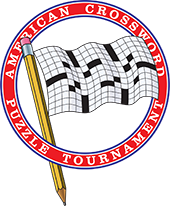Across and Down: Invasion of the irate Puzzle People
Source: Minneapolis Star TribuneDate: February 4, 2001
Byline: Kristin Tillotson
Across and Down: Invasion of the irate Puzzle People
Like the alien pod creatures from "Invasion of the Body Snatchers," we recognize each other everywhere.On buses, airplanes, over lattes at the coffee shop and under tables during marathon meetings, we exchange defeated glances and sharp pencils. We call each other, long distance and way too early in the morning, to demand, "Gimme something that flows through the Lake of Thun in four letters."
We are the Puzzle People.
Those who are not of our kind deride or pity us. They say we're obsessive-compulsives, idlers, avoiders of more constructive pursuits. We forgive them. Knowing that they'll never experience the self-actualizing thrill of completing the last square on a New York Times acrostic is the best revenge.
Revenge? That's not a very high-minded desire. But then, when riled, we Puzzle People can turn from sedentary scribbling to hysteria in a hurry. And we're a powerful bloc -- forcing, in the Star Tribune's case, a split decision, and double the puzzles.
On Nov. 26, this newspaper dropped its longstanding crossword, syndicated by the Los Angeles Times, and replaced it with the New York Times puzzle. Reader protests were intense -- from people who thought the new puzzle was too difficult, and from two-paper subscribers accustomed to solving the New York puzzle in the St. Paul Pioneer Press and the Los Angeles puzzle in the Star Tribune. On Dec. 8, the paper began running both puzzles during the week, and on Dec. 17, both on Sunday.
According to industry estimates, one-quarter of all newspaper readers consider the crossword a part of their routine. Judging from the intensity and volume of reactions to changes or errors in puzzles, I'm guessing they're the most vocal 25 percent. Consider the following sample comments from Star Tribune readers after the recent switch:
- "You @!!! I have been through four pots of coffee and five crossword dictionaries, and I can't get more than three clues. ... This puzzle makes me feel very, very stupid. I am not stupid. I am a physician. ... You have ruined my morning. You have ruined my ritual."
- "I tried to do this crossword for a week, and I called my doctor because I was sure I was getting Alzheimer's disease."
- "The Twin Cities is just not smart enough to do these puzzles. ... What's wrong with being a normal person? I am not that smart. I am not that proud. Fix this!"
- "I do this puzzle on the can on my break. People are complaining because I am in there too long ... now it is impossible to do two things at once."
And it's not just the retiree set vocalizing on this seemingly benign subject: Fortyish real-estate broker John Livingston, who regularly has coffee with a group of business-owning friends, said that on the first day of the switch, the crossword "was all they could talk about for two hours."
For a daily newspaper, trying to please all the readers all the time is a daily struggle. When it comes to puzzles, trying to be one-size-fits-all can go from daunting to quixotic: "Readers want a puzzle that is a challenge but not demoralizing," said Tim McGuire, executive editor of the Star Tribune.
"The tough part is what's challenging for some readers is impossible for others."
Gelfand offers three succinct reasons for why people pick up the habit. The first is medical: "They're supplements to anti-depressants." The second is social: "People do them together over the phone," and the third is dietary:
Puzzles "go with coffee and they're not fattening."
But what is it about the puzzles that gets people so passionate, cranky and opinionated?
Will Shortz, who edits the New York Times' puzzles, confirms the reader complaints above: "Partly it's because few things make people more angry than having their daily routine upset. Also, working a daily puzzle is a daily confirmation that you still have what it takes, mentally. If you're suddenly thrown a harder puzzle, it makes you feel bad."
Not long after Shortz started the job, one reader wrote him that getting used to a new crossword editor and his puzzle choices was like adjusting to a new lover: "It's not necessarily unpleasant, you just have to think through the relationship and get used to the changes."
Shortz looks for puzzles with "consistent themes, fresh, colorful vocabulary and a good sense of fun." He likes to see a balance of old and new references, and especially "names that everyone knows, but rarely appear in crosswords."
As for that Lake of Thun clue from the New York Times puzzle, the answer is A-A-R-E. It's a river in Switzerland. Now go solve already.

